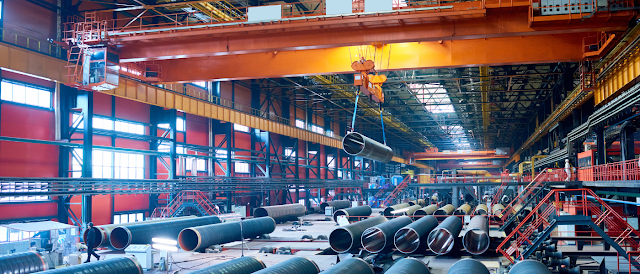Centrifugal Casting vs. Sand Casting: Which is Best for Your Industry?
Comparing Centrifugal and Sand Casting to Determine the Ideal Choice for Your Industrial Applications
As a leading manufacturer of alloy castings, UNI Abex Alloy Products Limited specializes in both centrifugal and sand casting solutions for various industries. This article explores the differences, benefits, and ideal applications of both techniques, helping industries make the right choice. Learn how uniabex.com provides high-quality custom castings tailored to industrial needs.
Understanding Centrifugal Casting
Centrifugal casting is a high-precision metal casting process where molten metal is poured into a rotating mold. The force created by rotation ensures even distribution of material, minimal impurities, and a refined grain structure.
Key Benefits of Centrifugal Casting:
Superior Mechanical Strength – Eliminates voids and porosity.
Excellent Surface Finish – Reduces machining requirements.
High Wear & Corrosion Resistance – Ideal for extreme conditions.
Minimal Material Waste – Ensures cost-effective production.
Best for High-Performance Components – Used in petrochemical, power, and automotive industries.
Understanding Sand Casting
Sand casting is a traditional casting method where molten metal is poured into a pre-formed sand mold. It is one of the most versatile and widely used casting techniques due to its low-cost tooling and ability to produce large, complex shapes.
Key Benefits of Sand Casting:
Cost-Effective for Large Components – Ideal for bulk production.
Supports Complex Designs – Suitable for intricate shapes.
Versatile Material Selection – Works with various alloys.
Scalability & Quick Prototyping – Reduces lead times.
Best for Heavy Industrial Applications – Used in steel plants, construction, and machinery manufacturing.
Comparing Centrifugal Casting and Sand Casting
| Factor | Centrifugal Casting | Sand Casting |
|---|---|---|
| Precision & Strength | High mechanical strength, no porosity | May have porosity and inclusions |
| Cost Efficiency | Higher initial cost, lower waste | Lower setup cost, higher material waste |
| Production Speed | Faster for repetitive, uniform parts | Ideal for one-time, complex designs |
| Surface Finish | Smooth, minimal machining required | Rough finish, requires more machining |
| Best For | High-performance components (tubes, bearings, rings) | Large, complex industrial parts (molds, cast housings) |
When to Choose Centrifugal Casting
Industries requiring high-performance, durable, and precise components prefer centrifugal casting. Examples include:
Petrochemical & Refinery Industry – Reformer tubes, furnace components.
Automotive & Aerospace – Engine parts, bearing rings.
Power Generation – Steam turbine rings, heat-resistant castings.
When to Choose Sand Casting
Industries needing large-scale, cost-effective, and customizable parts prefer sand casting. Examples include:
Iron & Steel Industry – Ladle shrouds, furnace linings.
Construction & Machinery – Heavy industrial parts, molds.
Foundries & Manufacturing – Bulk production of complex components.
Why Choose UNI ABEX ALLOY PRODUCTS LIMITED?
UNI ABEX ALLOY PRODUCTS LIMITED is a trusted provider of centrifugal and sand castings, delivering precision-engineered solutions for industries worldwide.
Why UNI ABEX?
✔ ISO-Certified Quality Assurance – Ensures top-tier casting precision. ✔ Advanced Manufacturing Facilities – Cutting-edge technology for superior castings. ✔ Custom Engineering Solutions – Tailored castings for industrial needs. ✔ Global Clientele – Trusted by industry leaders worldwide. ✔ Long-Lasting, Cost-Effective Products – Reducing downtime and operational costs.
Conclusion: Which Casting Method is Best for Your Industry?
Both centrifugal casting and sand casting have their advantages, and the right choice depends on application requirements, budget, and performance needs.
For industries that demand high-strength, wear-resistant, and precision-engineered components, centrifugal casting is ideal. For applications requiring large, complex, and cost-effective solutions, sand casting is the way to go.
To explore premium-quality alloy castings, trust UNI ABEX ALLOY PRODUCTS LIMITED. Visit uniabex.com for the best custom casting solutions in the industry.
Need expert guidance on casting methods? Contact UNI ABEX for tailor-made solutions!


Comments
Post a Comment